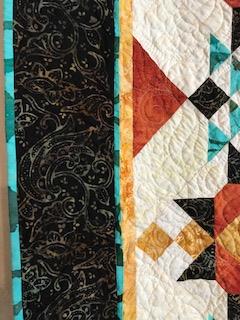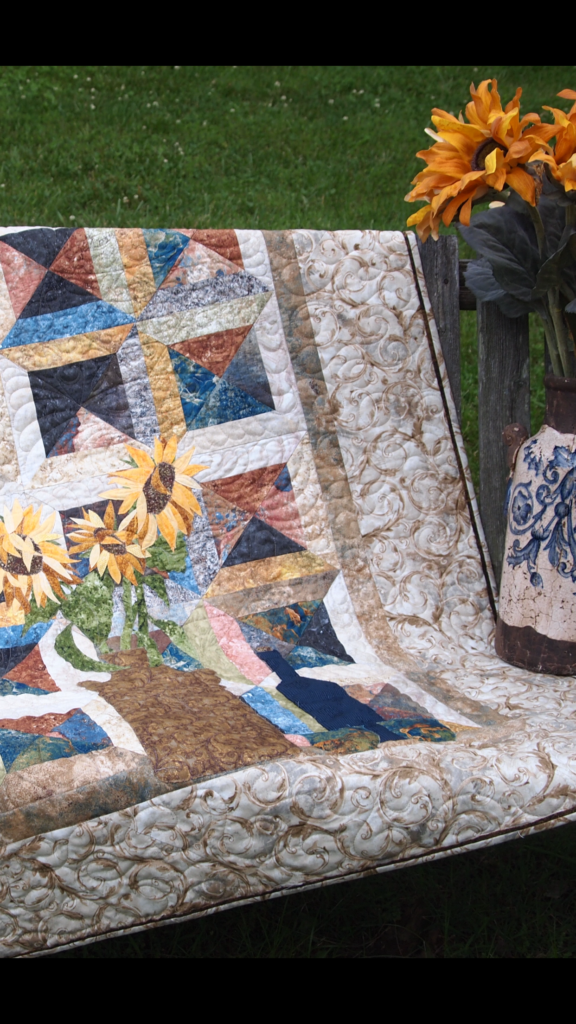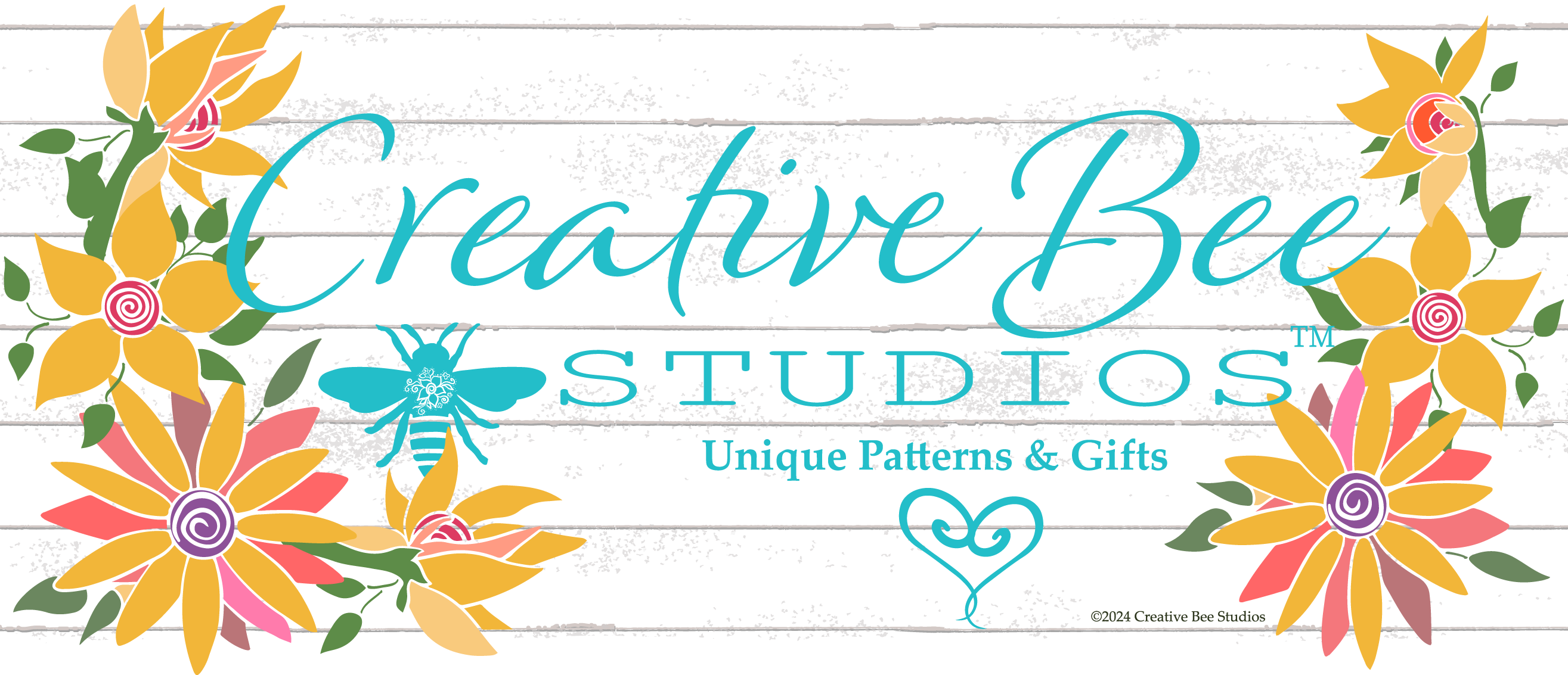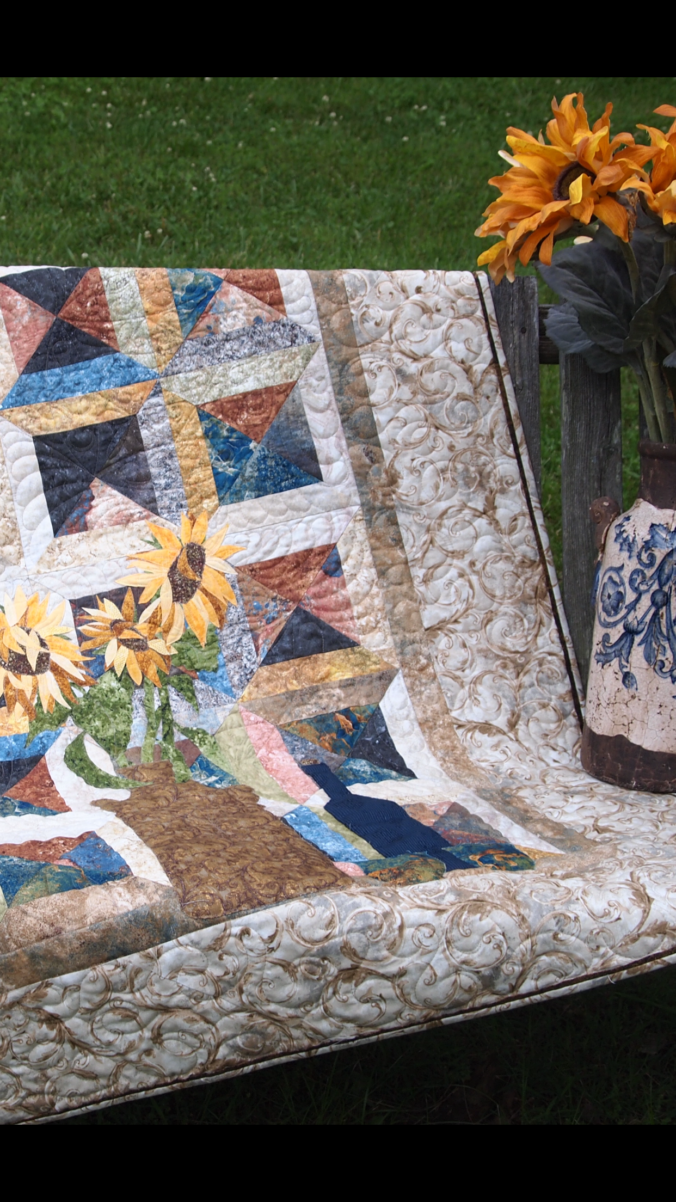Adding a flange to your quilt can add interest, color, and contrast.
A flange is a small strip of fabric, folded in half and attached by basting to the edge of a border, section, or even the final edge of a quilt.
While a flange doesn’t add to the size of your quilt, it can provide a pop of color or a “stopper” if needed. It can be helpful when planning the design of a quilt to add a flange if you don’t want to add a border or if you want to accent a section of the quilt.
It can also be useful to add a flange to an existing pattern. I did so here

This small flange helps the eye connect from the binding to the interior blocks of the quilt. Allietare pattern by Bonnie Hunter.
on my Allietare (pattern by Bonnie Hunter), because I thought it needed just a touch of the aqua between my inner and outer borders to “connect” the interior of the quilt with the binding (also in the aqua fabric). Because a flange doesn’t change the dimensions of the quilt at all, I didn’t need to worry about re-figuring pattern directions for borders.
Most flanges I’ve used were solid or read as solid fabrics, but as you can see, this one is a batik which adds interest as well as color.
Making a flange is super easy:
*Cut two strips of fabric slightly longer than the length of your quilt or area you want to emphasize and cut two strips slightly longer than the width of the working area. The width of your flange strips can be anywhere from 3/4 inch to 2 inches, depending on how much fabric you want showing. (If you prefer to measure and cut the lengths precisely, you can. There is just no need to do so because the flange will not alter the size of your borders or blocks. Let’s assume the borders are already measured, pinned, and attached carefully to avoid wavy borders and excess fabric. See this post for more information of unruly borders.)
*Fold the strips lengthwise, wrong sides together and press.
*Align the edges of the flange with the edges of your quilt, border, or section. Pinning isn’t necessary, but may help keep the edges aligned. I usually just go unpinned for flange.
*Use a basting stitch and less than a 1/4 seam margin to attach the flange to the left and right sides. Trim excess from edges. In the same way, baste and trim the top and bottom flange onto your quilt.
*Continue with your quilt as you normally would. It’s that easy!
This quilt is an example of using a flange to “stop” the quilt prior to the binding. Without a flange, there wouldn’t be a defined edge. I didn’t want a completely dark binding to be in stark contrast with the borders, so the flange was just the right amount of stopper needed.

This quilt has a dark flange between the outer border and the binding. Bella Piastrella by Karla Kiefner
When my friend Nancy and I design a quilt or church banner together we often consider the use of flanges – they’re just fun to do!
What technique do you enjoy using in your quilts?
Please sign up to get an email when my next post goes live!
Follow me on Facebook, Instagram, Twitter, and Pinterest!

